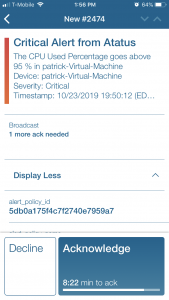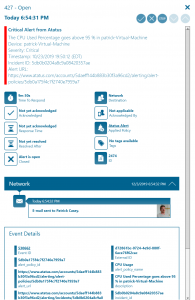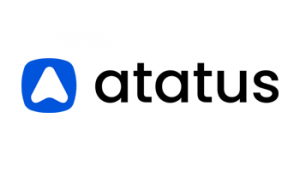
Mobile alerting with tracking & escalation for Atatus
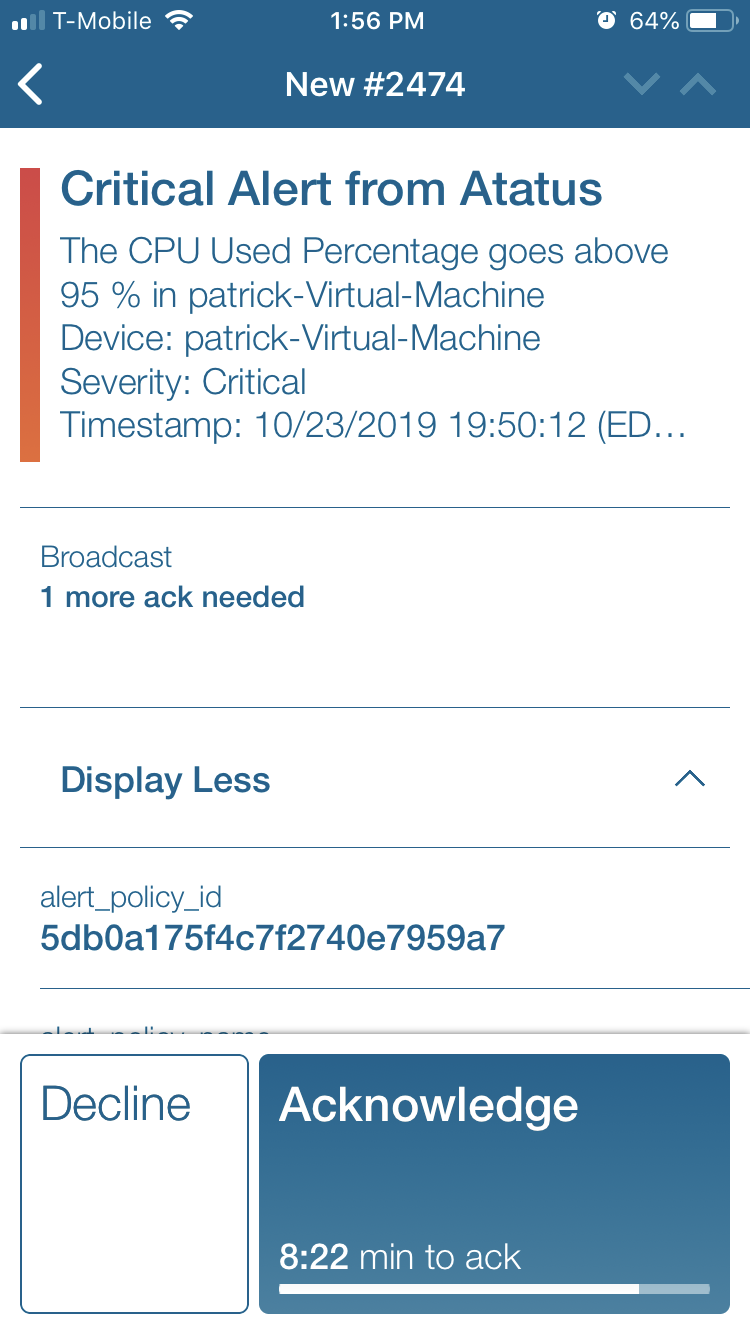
![]() Why Enterprise Alert
Why Enterprise Alert
Enterprise Alert completes the last mile between your infrastructure monitor and the on-call duty members tasked to resolve critical issues. Atatus monitors the health of your servers and hosts in real-time. Identify the hosts, processes that consume the most memory and CPU, analyze the load averages, disk usage and I/O wait times. When these thresholds reach critical limits, Enterprise Alert will deliver the notifications via push, SMS, email and voice.
![]() How it Works
How it Works
Enterprise Alert establishes a connection via WebHook URL. Using the powerful REST API, JSON formatted event data will be prioritized triggering alert policies on key parameters so that users receive only the most critical alerts with the most pertinent information. Each team member will receive an alert via their designated notification channel, allowing for the flexibility of user dictate notification methods.
![]() Integration Capabilities
Integration Capabilities
- Forwards Atatus alerts to Enterprise Alert for mobile alerting
- Uses JSON payload via REST API
- Staff can acknowledge and take ownership for critical incidents that occur
- Communicate within an alert to address a problem
- Alerts are escalated in case of no response
- On-call scheduling to alert the right people at the right time
![]() Scenarios
Scenarios
- Website Monitoring
- Server Up-time Monitoring
- Performance Monitoring
How to Integrate
Sending Atatus Alerts to Enterprise Alert
- First, create a notification channel in Atatus. Go to Alerting » Notification Channel » Create New Notification Channel.

- Enter the Enterprise Alert WebHook URL(see next section on creating a REST Endpoint) into the URL text box.
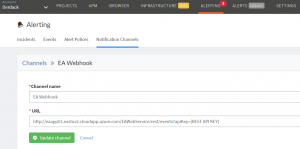
- Then edit an existing alert policy and select the Enterprise Alert WebHook you just created.
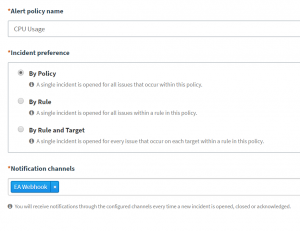
- The next time the alert policy triggers, the information related to the event will be sent to the REST API and Enterprise Alert will evaluate whether this event triggers an existing alert policy.
Create a new Rest API endpoint
- In Enterprise Alert click on the System-Event Sources menu options.
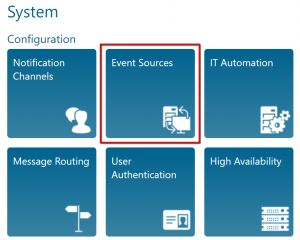
- In the event source page click on the New Source button at the bottom.
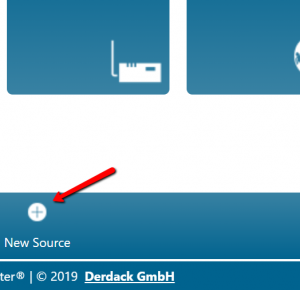
- Select REST API Client from the dropdown list, add a name for the new source and save the API Key somewhere for use in step. Click the Save button.
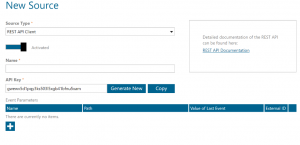
- In Enterprise Alert there is an Endpoints section on the home page, copy the REST API URL and paste it in the Atatus WebHook configuration, append the API key from step 3 at the end of the line after the “apiKey=” portion.
Creating alerts in Enterprise Alert for Atatus Alerts
To receive Alerts from the previously created REST Event Source Alert policies must be created. To do that please follow the below steps:
- Click on the Alert/Incoming Events button.
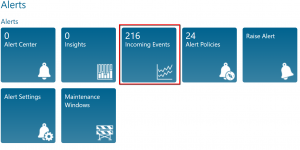
- Find a Rest API alert from Atatus and click on the “Create Policy From Event” button.
- Give the event a Name, the Event Source will default to Events from Atatus. Click Next.
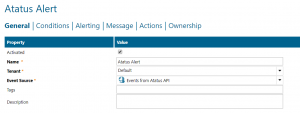
- The Conditions will fill by default with the variable provided by the Atatus event. Set the conditions to meet the needs of your requirements. These can be anything from as simple as the email address to as complex as using specific keywords in the error message and using multiple and/or statements to make the alerts more focused. Click Next.

- Choose the Users/Teams you wish to be alerted and the notification channels you wish to use for the selected teams. Click Next.
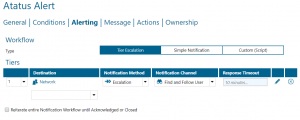
- Enter a Subject and Body of the alert to send to your users. Enterprise Alert allows the use of dynamic content, this forwards the Atatus information such as Subject, Text(body), and Originator Address to be included in the message from Enterprise Alert. Click Save.
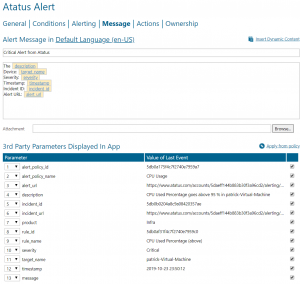
Notifications within the Enterprise Alert mobile app
The Enterprise Alert mobile app shows alerts for your users. Below we have examples of an open alert, alert details, and a closed alert from the Enterprise Alert mobile app.
A centralized Alert Center can be viewed from the web portal. All alerts, whether active, overdue or closed are visible to EA admins. Ownership and even delegation is as easy as drag-and-dropping the alert to the person/team.
